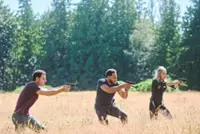Finnish conscripts undergo training in Sodankyla. — Jim Huylebroek/The New York Times
THE Finnish Defence Forces sent out an urgent message: we are being invaded. We need help.
Hundreds of US troops – part of a new Arctic division – boarded planes in Fairbanks, Alaska. Their flight curved over the North Pole and landed at Rovaniemi Airport in northern Finland.





